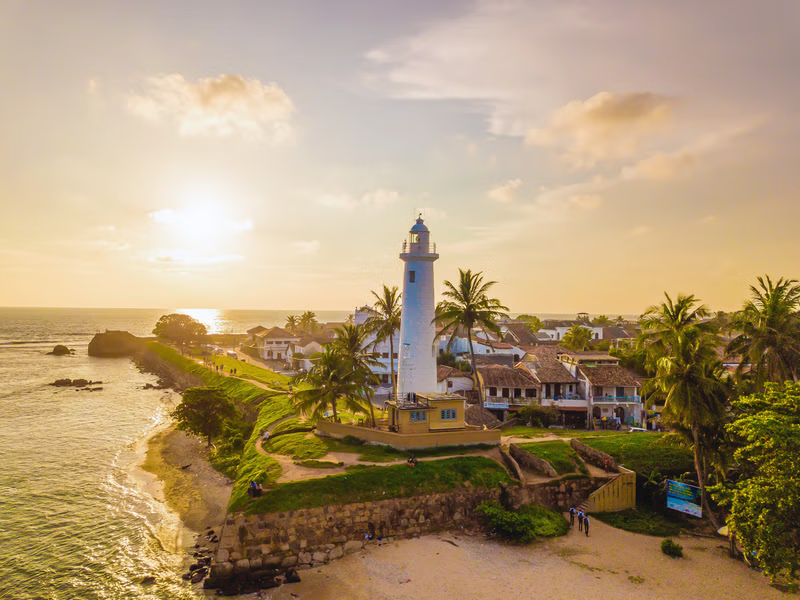Padiwita Ambalama
The Padiwita Ambalama, located in Matale, Sri Lanka, is a remarkable example of ancient Sri Lankan architecture and a testament…
View Details
The Galle Lighthouse, a majestic sentinel standing tall along the southwestern coast of Sri Lanka, is more than just a navigational aid; it’s a symbol of maritime history and architectural splendor. This iconic lighthouse, perched at the entrance to the historic Galle Fort, has guided ships safely through turbulent waters for generations. In this guide, we’ll embark on a journey to discover the fascinating history, significance, and practical tips for making the most of your visit to the magnificent Galle Lighthouse.
The Galle Lighthouse, also known as Pointe de Galle Light, has a storied history that intertwines with the island’s maritime legacy. It was first erected in 1848 by the British colonial administration, marking a significant turning point in the region’s seafaring history.
The original lighthouse was a simple structure with a single light source, but over the years, it underwent several renovations and upgrades to become the imposing and iconic structure that stands today. Its historical significance is further enhanced by its inclusion on Sri Lanka’s list of protected national monuments.
The Galle Lighthouse is a sight to behold, standing 26.5 meters (87 feet) tall. Its striking white tower, adorned with red vertical stripes, is a striking contrast against the backdrop of the azure Indian Ocean and the lush greenery of the coastal landscape.
The lighthouse’s architectural design reflects a fusion of colonial and South Asian influences. It encapsulates the unique charm of the Galle Fort, a UNESCO World Heritage Site, and adds to the area’s historic and aesthetic appeal.
For centuries, the Galle Lighthouse has played a pivotal role in ensuring the safety of ships navigating the Indian Ocean. The beam of light emitted from the lighthouse serves as a critical reference point for mariners, guiding them through the tricky waters around the Galle harbor and preventing them from running aground on the treacherous rocks.
The lighthouse’s importance has not diminished with modern navigation technology; it continues to serve as a beacon of safety for vessels traversing the busy sea routes near Sri Lanka. Its presence is a testament to the enduring importance of traditional navigational aids.
Before you plan your visit to the Galle Lighthouse, consider these practical details:
The Galle Lighthouse is not only a maritime landmark but a symbol of Sri Lanka’s enduring connection to the sea. As you stand before this grand structure, you’ll sense the history, the maritime traditions, and the architectural beauty it embodies. Whether you’re captivated by its rich history, its navigational significance, or the stunning views from the top, the Galle Lighthouse promises an unforgettable experience at the crossroads of history and the open sea. It’s a place where time-honored traditions meet modern maritime technology, creating a lasting impression on all who visit.